Are you disappointed with the amount of berries your strawberry plants are producing? Are your strawberries not blossoming? Here are gardening tips to help your strawberries blossom and tips for how to get strawberries to produce more fruit.
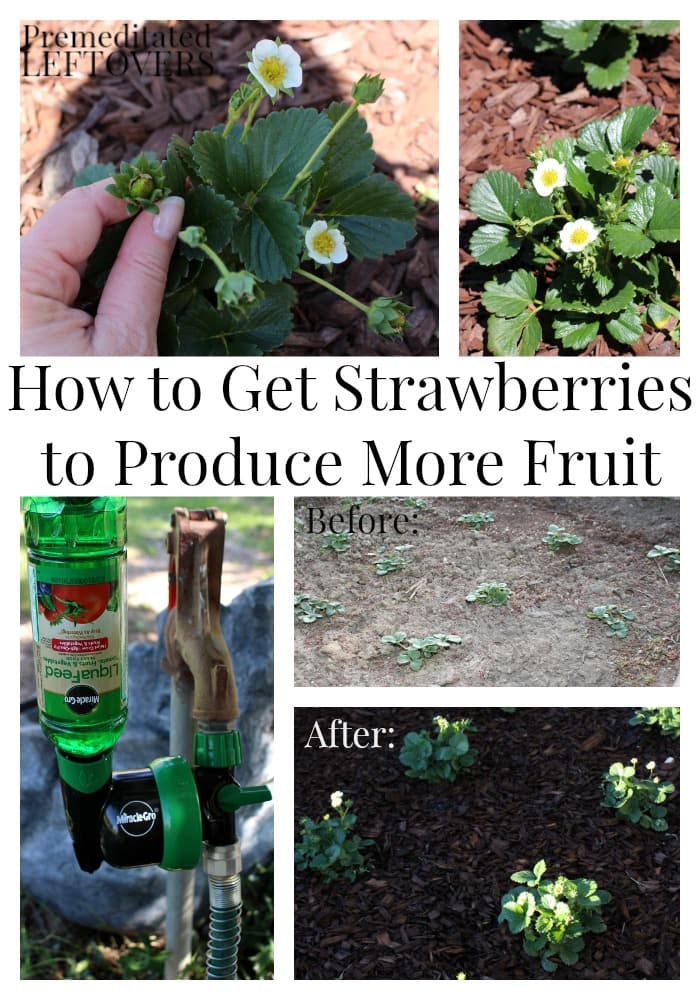
I love being able to walk out the back door and pick a few strawberries to add to my morning oatmeal. Unfortunately 2 years ago we had to dig up our strawberry patch to do some plumbing work. I replanted the strawberry plants after the work was done, but our strawberries did not recover and start producing blossoms and thus berries as quickly as I would have liked. I have taken some time to analyze the situation and done some experimenting, so I can get our strawberries to produce more fruit. Below are some gardening tips for growing strawberries and taking actions to get your strawberry plants to produce more fruit.
How to Get Strawberries to Produce More Fruit
Plant your strawberries in sandy, well-drained soil. Too much water can rot the crowns of strawberry plants. This will not only limit the fruiting, but this can cause the strawberry plants to die as well.
Ensure your strawberries are planted in nutrient-dense soil. Strawberries grow best in slightly acid to neutral soil with a pH of approximately 5.5 to 7.0. If the soil is too acidic, you can add lime to raise the pH level. If the soil is too alkaline, add sulfur or compost to lower the pH. Add a one-inch layer of compost or rotted manure to sandy soil. Work composted leaves into clay soil.
Ensure your strawberry plants are getting the right amount of water. Strawberries have a shallow root system, so they get most of their water from the top couple of inches of soil, which also happens to be the soil that dries out the fastest. I place a layer of mulch around the berries to help hold the moisture in the top soil.
Feed your strawberries the right type of plant food. Without nutrients, strawberries will not grow well, but if they are given too much nitrogen they will grow excessive foliage without flowering. So if you choose to fertilize your strawberry plants, use one intended for growing fruits and vegetables that have less nitrogen than general plant food. Since I determined that our soil was poor and wanted to do something about it quickly, I chose to supplement our strawberries with plant food. I used Miracle-Gro LiquaFeed Tomato, Fruits, and Vegetables Plant Food because it has a lower percentage of Nitrogen than general plant food which helps the strawberry plants produce more blossoms instead of more leaves.
Trim the strawberry runners. Each year your strawberry plant produces runners. Runners are the long stems that run off the central plant and create more strawberry plants. These runners will root nearby and produce a new plant, but they remain attached to the main plant and drain nutrients from it. This can cause the main plant to become exhausted and take a “rest period” from producing more berries.
Attract bees to your yard to help pollinate your strawberries. Plant flowering bushes, trees, and flowers nearby to attract bees to your yard early in the season and give them a reason to come back to the area. A small patch of strawberry plants alone is not enough to attract and keep bees in your area.
Make sure your strawberry plants are pest and disease-free. Plants that are fighting disease or parasites are not going to have much energy to produce blossoms and berries. Deal with pests and disease as soon as you notice them to keep your strawberry plants healthy.
My Strawberry Experiment
This spring when I removed the straw, I dug down into the earth and realized that when the plumbers refilled my strawberry bed with soil, they didn’t replace the garden soil that was originally there. Instead, they switched the dirt from the yard with the strawberry patch. I usually work in compost and rotted manure to enrich the soil. Since the soil quality was so poor, I didn’t feel I had the time for the nutrients to truly enrich the soil in time to impact this year’s strawberry crop, so I decided to supplement with Miracle-Gro Plant Food.
Before:
I was given Miracle-Grow LiquaFeed Universal Feeder to try out the new delivery system. I liked the ease of use and was intending to just use it to feed my flowers. However, after looking at my poor strawberry patch, I decided to try using it to feed my strawberry plants. I have never used Miracle-Gro on my strawberry plants before, so I decided to do an experiment so I could see if the Miracle-Gro was really effective.
I fed half of my strawberry plants using the Miracle-Gro LiquaFeed Universal Feeder. On the other half, I just gave water to the strawberry plants. I expected that the plants that received plant food would fare somewhat better, but I was truly amazed by the results! After 2 weeks, the plants that only received water had 0 – 2 flowers each. After just one application and 2 weeks, the plants that received Miracle-Gro LiquaFeed Tomato, Fruits, and Vegetables Plant Food average 6 – 8 flowers and some had as many as 10 flowers.
Two weeks after feeding with Miracle-Gro:
I was truly amazed at how many flowers, buds, and small fruit appeared in only 2 weeks of using Miracle-Gro!
Two weeks after water alone:
The strawberry plants that only received water grew larger, had more foliage, and sent out runners, but produced little or no flowers. Another thing I observed, is that the plants that only received water had more insects than those that received the Miracle-Gro. Now that my experiment is over, I am going to feed these plants with Miracle-Gro as well and will buy some ladybugs to help control the pests.
The Miracle-Gro LiquaFeed Universal Feeder made it easy to feed the plants in my garden as well as my flowers. With a flip of the switch, I could turn it from water to feed. I could also easily switch out the different bottles of plant food by just unscrewing one, removing it and then attaching the one I wanted. Anything that can water, can be used to easily feed your plants. So you can attach it to a bubbler to feed flowers while you water them if you wish:
If it waters, now it feeds with Miracle-Gro® LiquaFeed® Universal Feeder. It’s a great tool to help you reach your gardening goals by providing the essential nutrients your plants need to thrive all season long.
Miracle-Gro® sponsored this blog post. The opinions and text are all mine.

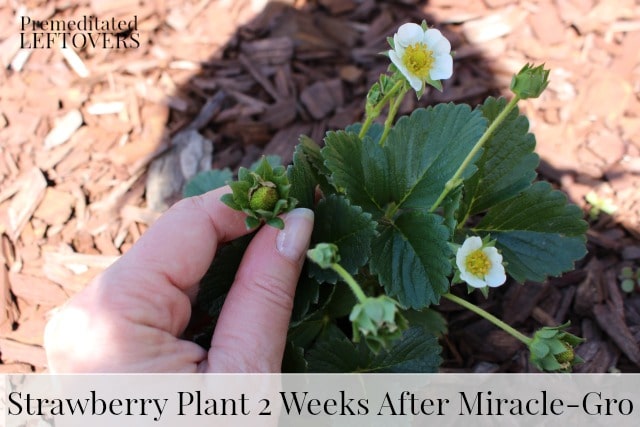
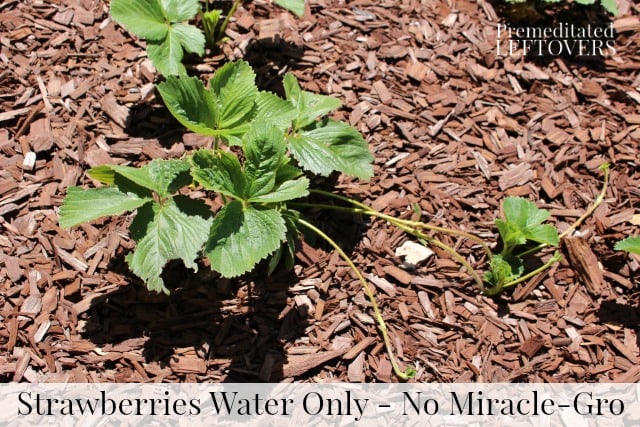
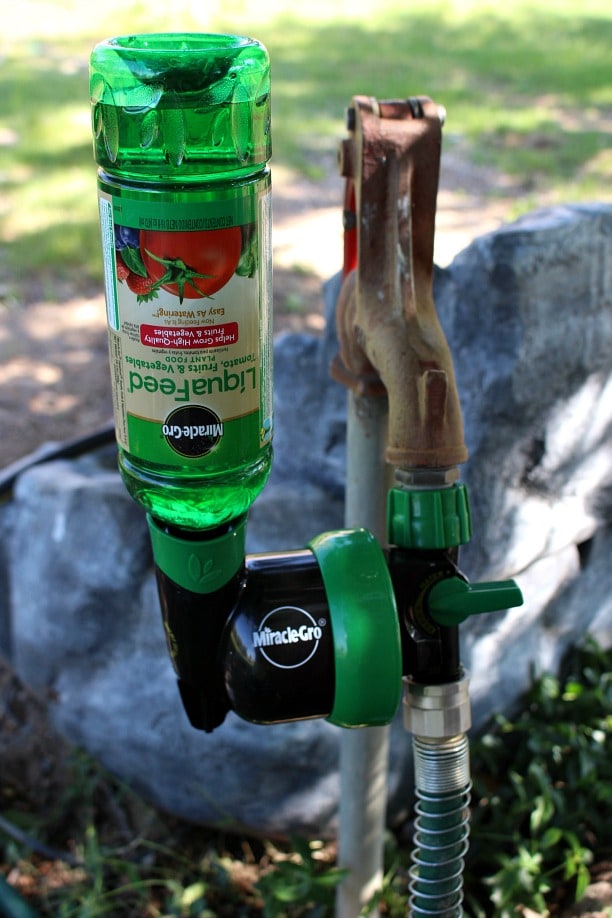
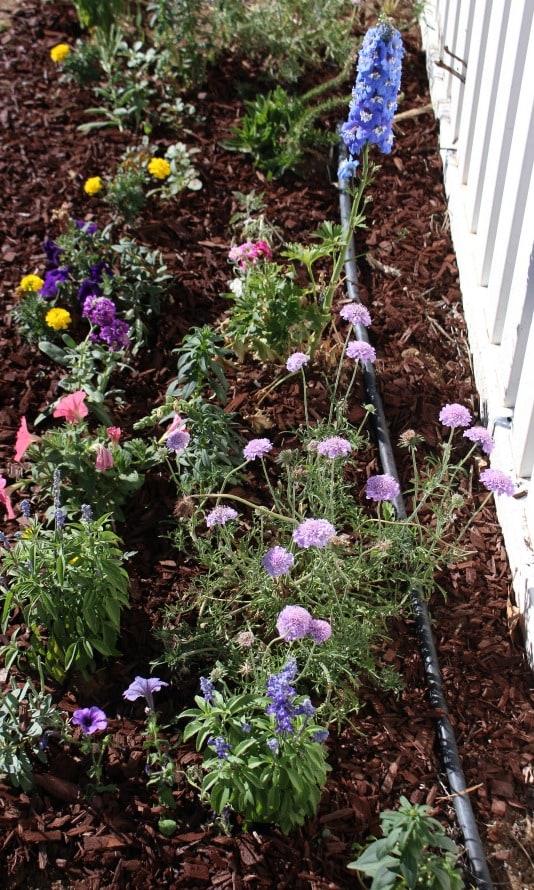

Carmen Sharma says
I enjoyed all the information you provided on strawberries. I have a problem with squirrels that eat my strawberries just before they are ready for picking. They also dig holes around my plants. Any suggestions?
Thank you.